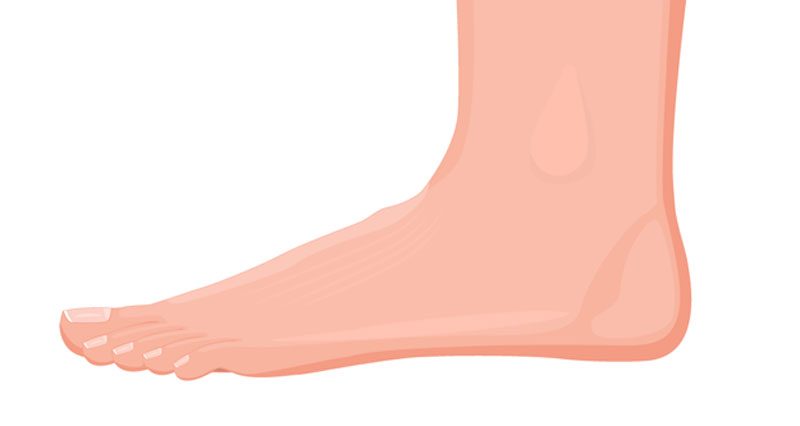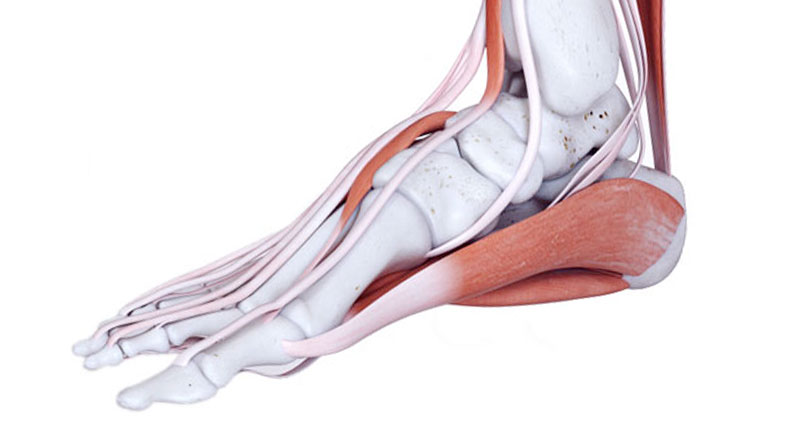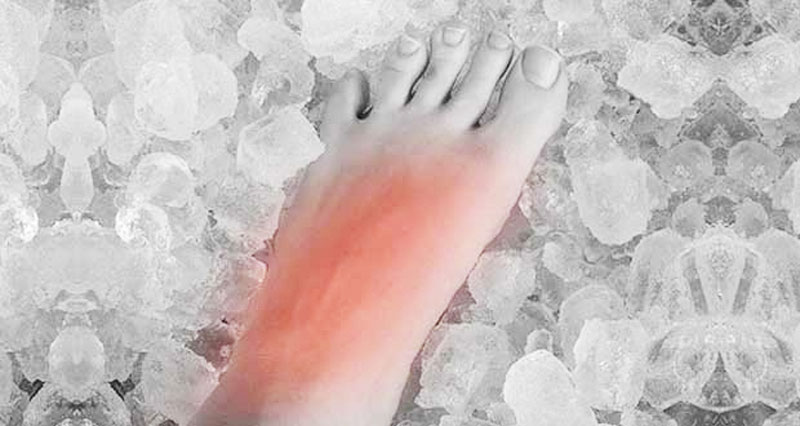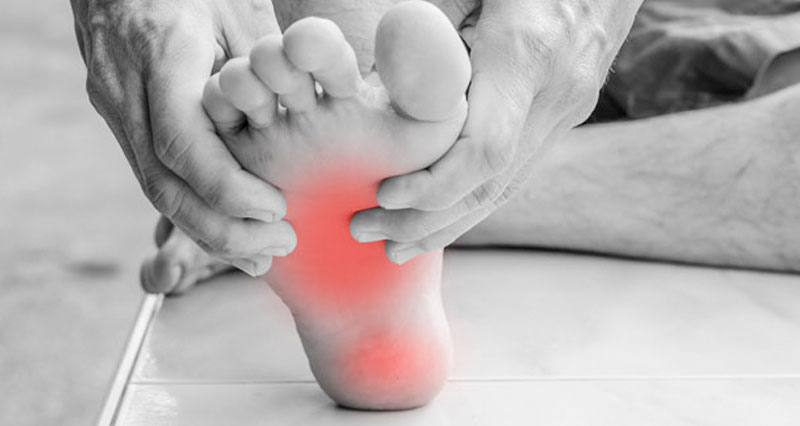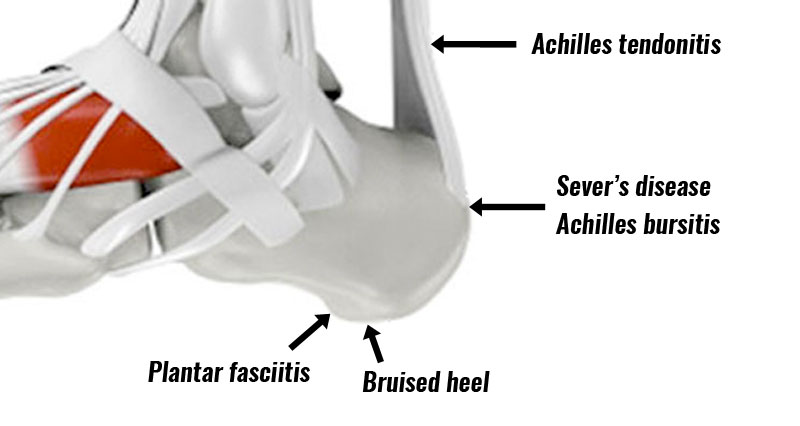Common causes of pain along the outside of the foot include Peroneus brevis tendon strain, Cuboid syndrome and foot fractures. Here we outline the common injuries resulting in outside foot pain.
Medically reviewed by Dr Chaminda Goonetilleke, 4th Jan. 2022
Peroneus Brevis Tendon Injury
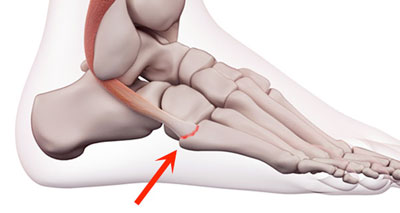
The Peroneus Brevis tendon inserts into the 5th metatarsal bone (the long bones in the foot) on the outside of the forefoot. Symptoms include:
- Pain over the prominent bony part on the outside of the ball of the foot.
- Possible swelling or bruising.
- The foot will be painful to walk on.
- Pain will be made worse when attempting to turn the sole of the foot outwards against resistance.
- More on Peroneus brevis tendon strain
Cuboid Syndrome
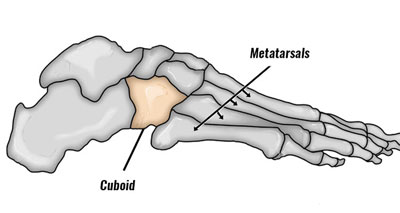
Cuboid syndrome occurs when the peroneus longus muscle in the lower leg applies excess traction (pulling) on the cuboid bone, causing it to partially dislocate. The injury often occurs in conjunction with peroneal tendonitis.
Symptoms of a cuboid syndrome are very similar to a sprained ankle and include:
- Pain on the outside of the foot.
- Pain is worse when weight-bearing.
- More on Cuboid syndrome.
Midtarsal Joint Sprain
A midtarsal joint sprain is an injury to any of the ligaments holding the midtarsal joints together. The exact location of the pain depends on which of the many foot ligaments has sprained (torn). Symptoms include:
- Pain on the outside of the midfoot.
- Swelling on the outside or top of the joint.
- Pain will be felt on certain movements of the foot but again, which specific movements are painful depends on your injury.
The two most commonly injured ligaments are the calcaneocuboid ligament on the top of the foot (which connects the Calcaneus and the Cuboid), and the Bifurcate ligament (a Y-shaped ligament).
- More on Midtarsal joint sprain
Jones Fracture
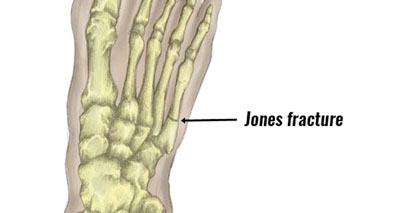
Jones fracture is a fracture of the 5th metatarsal bone on the outside of the foot, at the ‘proximal’ end of the bone (nearest the ankle). It is most likely to be caused by following an ankle sprain or forceful impact to the outside of the foot. However, it may occur through overuse, particularly repetitive strain or impact to the outside of the foot. The main symptoms are:
- Pain on the outside of the foot.
- Swelling
- Difficulty weight-bearing.
If you suspect a fracture then seek medical help immediately. An x-ray will be needed to diagnose the injury and the foot will need to be immobilized in a cast for 6-8 weeks.
- More on Jones fracture
Sinus Tarsi Syndrome
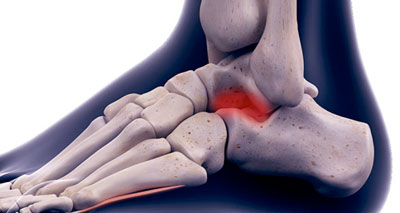
The sinus tarsi is a small bony canal that runs into the ankle under the talus (ankle bone). Sinus Tarsi Syndrome (STS) occurs following damage to the structures in and around this space. It may follow an ankle sprain, or result from overuse. Symptoms typically include:
- Pain in the front of the lateral malleolus (bony bit on the outside of the ankle).
- Pain may sometimes be more general and difficult to pinpoint.
- Symptoms are often exacerbated by running around a curve. For example in track running.
- The opening of the sinus tarsi, located on the outside of your ankle will be tender.
- More on Sinus tarsi syndrome
Peroneal Tendinopathy
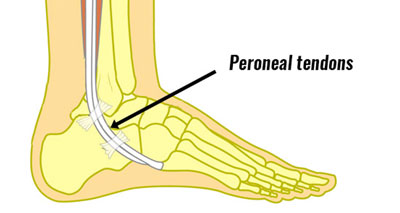
Peroneal tendinopathy is degenerative damage resulting in pain and loss of function of the peroneal tendons which run behind the lateral malleolus on the outside of the foot. Symptoms include:
- Pain and swelling on the outside of your ankle and foot.
- Pain becomes worse during activity, but gets better with rest.
- Pressing in under the malleolus on the outside of the ankle will be tender.
- More on Peroneal tendinopathy
When should I see a doctor?
If you have severe pain, or severe swelling, or are unable to complete normal daily tasks three days after injury.
Or you have a change in sensation in your foot. For example, numbness or pins and needles.
If you have rested and applied the PRICE principles (protection, rest, ice, compression, elevation) for two weeks or more, and still have pain.
